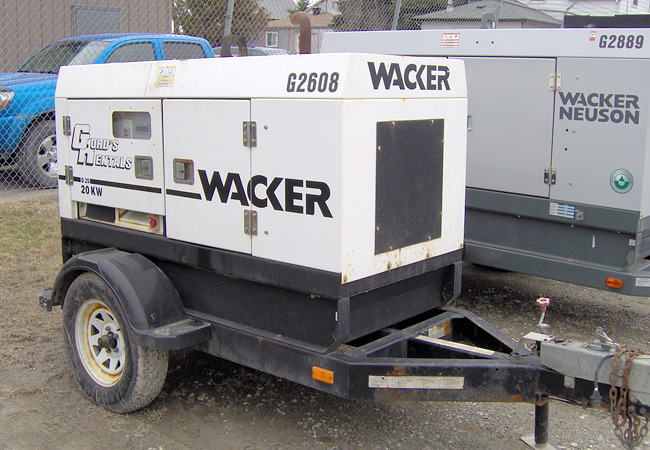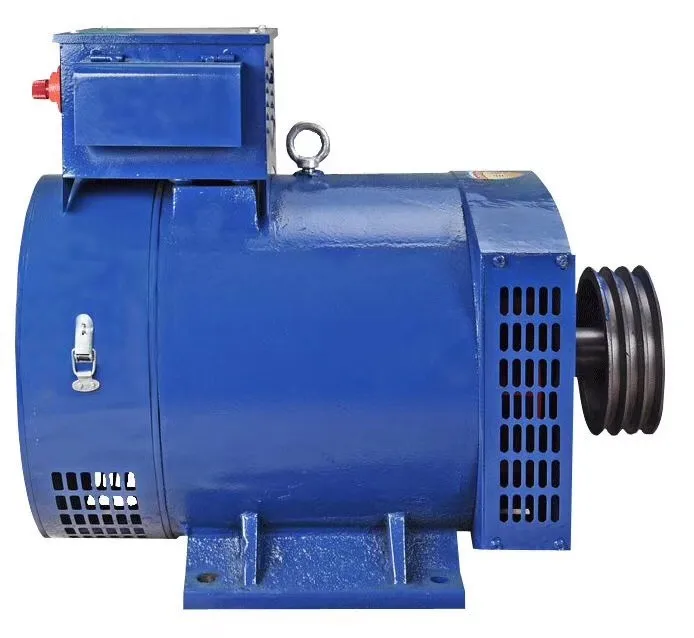It is Wednesday my dudes, 26/04/2023, 17:37.
Okay, it is time to actually design stuff and 3D model my way out of this crap!
Okay, all right, I'm doing it!
C'mon brain, just work!

Another day passes and I'm still Mechless, Exoskeletonless, Exosuitless....

While I was procrastinating and having existential crisis, I started researching the power storage and power transmission systems out there.
And...
This container looking thing is a 1 megawatt battery pack.
It has 1 million watts and it would be able to power this mechsuit of mine for... 50 hours. Basically, two days of continuous use.
The bellow image is a 20kw electric generator.
Basically, a generator that is capable of powering my mechsuit for whatever hours...

I don't know if my brain is making pranks with me or anything like that, but...
I'm seriously trying to fit such thing in a backpack-sized power supply?
Me??!!
Remember all that talk about the 10horsepower micro turboshaft engine in previous Project Logs?
Welp...
There are inneficiencies on the generation of power by alternators and generators alike.
And for every 1 horsepower generated, I need to input around 2 horsepower to each car alternator...
At best, 1.5 horsepower.
In the best case scenario, I would need a 37 horsepower engine to power 25 horsepower.
So, 4 micro turbines just to make the mech/exosuit walk.
Of course, I could shift towards porpuse-built efficient generators instead of stacking up generic alternators I would be able to excavange from old cars...
... But these are heavy, bulky, are the reason the electric generators are so big and heavy, and still can only achieve around 80% of efficiency.

And are also really fricking expensive...
By the way, althogh the idea of stacking cheaper and smaller generators with lower wattage ratings is tempting, the fuel consumption will proportionally scale with the amount of generators, that's why it is better to have a big generator producing X amount of kilowatts than a lot of tiny generators producing some amount of watts.
Yes.
I know.
I said in the project itself that mechs aren't efficient, neither pratical, and much less cheap.
But still...
It is kinda of a mood breaker to build such thing for nothing.
I wasn't expecting such thing to be this expensive...
Why I'm like this?
I say I will do something that isn't that great, and still, I say I will do it, and when I finally need to actually "do it", I start complaining...
"Do it" = just 3D model this stupid thing.
__________________________________________________________________________
Edit¹:
In this section I had an entire page worth of rambling talking about an incredible "discovery" I had.
Basically, if you convert ethanol to hydrogen and then convert hydrogen to electricity using a fuel cell, you would get 30,000 watts of electricity for every 12 liter of ethanol per hour (around 35 to 40 horsepower).
There is a process called "steam reforming" that basically can convert any kind of hydrocarbon fuel (gasoline, methane, methanol, diesel etc) into hydrogen.
And for some reason, it generates more eletricity using "ethanol>hydrogen>electricity" pipeline than an ethanol fuel cell directly making electricity from ethanol.
The "only" problem is that a "cheap" 6000 watt hydrogen fuel cell costs 30,000 DOLLARS, costing 150,000 dollars in total if you choose to reach 30,000 watts of electricity.
So, even if one were to use hydrogen fuel cells with steam reforming, it would still cost more than literally just making an stupid turbine engine setup.
By the way, the reason Hydrogen Fuel cells cost so much is because they need Platinum to work efficiently.

Well, I guess if someone found a way of making efficient hydrogen cells without platinum, or even just an efficient way of making hydrogen from water, then I guess it would be enough to "hold the strings" while nuclear fusion is still in its infancy.
I mean, if we found a net positive way of producing hydrogen... It would almost be like nuclear fusion.
"Net positive" = you use less energy to make hydrogen than this amount of hydrogen is capable of producing.
Normally one of those car HHO generators uses 400 watts to make 1000ml of hydrogen gas.
So, 1 liter of hydrogen at ambient pressure (130watts/50times less pressure) gives merely 2.6 watts of power.
You "just" need to make the hydrogen generator to be 154 times more efficient in order to extract 0.4 watts from the whole stuff. xD
__________________________________________________________________________
Desinging:
So, accordingly to ChatGPT and the questions I've made on the internet that no one answered or called me an idiot, basically, a rod with 60cm of length should have at least 3 to 5 inches of diameter in order to sustain 20 tons of tension/weight being applied to it laterally.
So, I will make everything with 8 inches (20 cm) of diameter/size in order to stay in safety parameters, of course, assuming I'm using conventional UHMWPE and not the composite I talked about on Projct Log 45, which would double the strengths of the UHMWPE.
I was testing here using simple shapes with the proportions I intend to use, the big headless human mesh has 2,55 meters of height, and the tiny human on the side is more or less my height.

Okay, maybe the idea of using the same structure for the legs and the arms wasn't that great.
Besides, now that I put everything together, it feels like 20cm of diameter for everything is a bit of a overkill...
Now I tried these parts with a more moderate sizes of the parts.

It looks as beautiful as my face, and my face looks as beautiful as my ass.
That is just the structure itself, without any kind of electric motor, chain drive, reduction boxes, gas springs and counterbalancing springs.
Crap, I really took a project too big for me...
By the way, for the sprocket stuff I'm taking free STL models available on the internet, in this link.
In fact, I'm taking a lot of STL files because I'm bad at 3D modelling. :/
So, assuming that I will be using that 2300 watts electric motor for everything, this will be the gear box that looks like a servo motor box.
The nominal working power of the motor is said to be 1800 watts, but I will be using 750 watts for every one of the 6 motors on the hip "WHATS" joint.

And thus, the reduction will be from a 20mm diameter timing wheel rotating at 36392 RPM and a torque of 0.1968 Newton meter of torque to a 100mm (10cm) timing wheel that will rotate at 7278 RPM and 0.984 Newton Meter.
Basically the top timing wheel in the image connected to the motor at the back.
Unfortunately, there isn't any kind of transmission system (such as gears) that I'm capable of building/3D printing, so it will be 4 timing wheels to support the 4 newton meters of power being transmitted for the next timing belt.
Of course, since I will be changing the continuous force and speed every now and then, this system won't be able to handle much.
The smaller 4 timing wheels with also 20mm of diameter will drive the four bigger timing wheels with 10cm of diameter at 1455.6 RPM and 4.92 Newton meter of torque.
Then it wil drive a double sprocket/drive chain with also 20mm of diameter at 1455.6 RPM and 4.92 Nm to a 10cm diameter double sprocket that will rotate at 291.1 RPM and 24.6 Nm of torque to a last 20mm diameter sprocket.
This 20mm diameter sprocket will rotate the "WHATS" joint with 35cm of diameter with 15 RPM and 477.4 Nm of torque.

Well, this looks a little better than I initially imagined, to be honest... But still looks like my face.
Well, this thing is simply too bulky, I think I will have to mess with gears after all.
Actually, I believe there is a tool for gears on Blender, but I will have to look it up later.
I was interested on the project after the last Project Log, but right now my brain is saying that I should give up on the project no matter what. :/
... Or I could "just" put a 100:1 planetary gear on the motor and connect it to a 14cm radius sprocket and then to the 35cm radius sprocket on the base.
I would need to buy an original version and then copy it...
... Assuming it works.
_________________________________________________________________________
Edit¹:
Now that I stoped to think about it, I think it could be better for the project if I treated the actuators like muslces.
Yes, like the winch/tendon system I talked about in Project Log 1 so long ago, but it will only depend on my skill of making the gears.
At least for the legs, that will take so much weight that common gears/sprockets may not be the best choice.
The only reason I was avoiding using winchs was... That I completly forgot about them. :|
... And also because I wanted the hip joints work as a single actuator in all directions/degrees of freedom, this way I would spare a lot of electricity and a lot of money on the final system since I would different motors with the same power output to do different axis of rotation...
And on top of all of this, winch mechanism are incredibly inneficient.
Every time I searched on google, asked on forums/websites or even to ChatGPT, winch mechanisms are bellow 40% efficiency (for some reason).
But if I follow the lead of a rope sprocket, I think I will be able to circumvent this dang efficiency problem.
Discussions
Become a Hackaday.io Member
Create an account to leave a comment. Already have an account? Log In.